in Joints & Muscles, Sports Physiotherapy
Do You Exercise Your Feet?
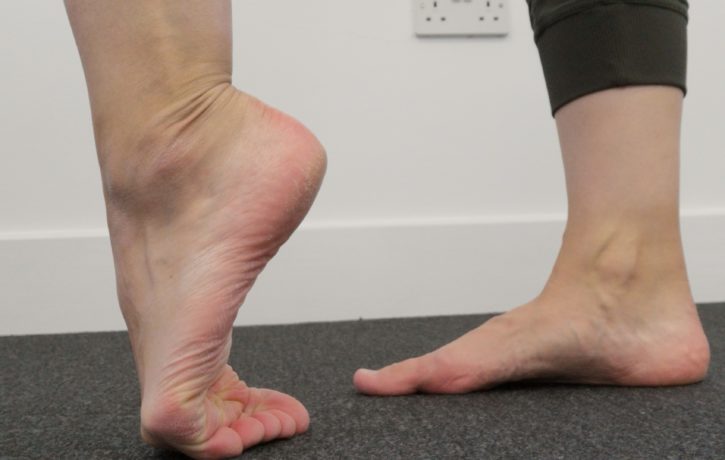
Exercising to keep our legs strong, our spine healthy and our shoulders mobile is something that many of us do in some way or another. But how much do you look after the health and functionality of your feet?
Sure, we walk on them when we run or when we walk the dog. We stand on them when we lift weights in the gym. But we package our feet in shoes most of the time and load them with our entire body weight, and sometimes more if we are lifting weights. When you think about it, feet are dealing with really a lot. Is it any wonder they sometimes feel tired or achy or that we repeatedly develop plantar fasciitis?
What we also need to consider is that when we suffer from knee, hip or back pain, the cause may also lie with our feet. Our feet are designed by nature to function somewhat like very strong springs that can finetune our balance to the ground we are walking on. They also absorb impact so that our knee and hip joints do not need to take the hit. As mentioned before, our feet are not likely functioning the way nature intended, as they spend most of their time in shoes and on hard surfaces. (How often do you walk or stand on grass or sand?) So when we suffer with compression in our knee or hip joints this may be a sign that our feet are not doing such a great job anymore at acting like a body-made spring.
Here are a few simple exercises you can do that will help you keep your feet more comfortable and provide you with the shock absorbton you need, to keep the rest of your body bouncy and healthy.
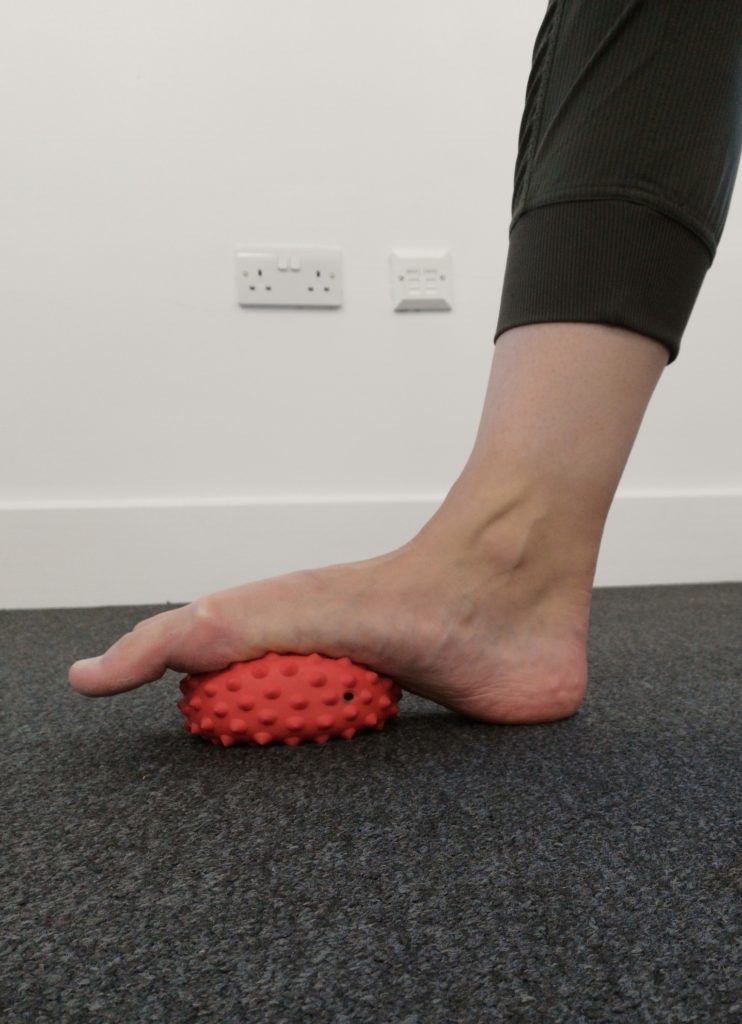
Fascial Massage For this you need a soft ball to massage the dense fascia in the sole of your foot. This is the exercise that relates the most to improving your foot’s capability to shock absorb. Simply press and roll your foot on the ball from heel to toes. Be careful not to use a ball that is too hard, like a tennis ball, as the fascia will tense and harden if the object is uncomfortably firm. So it will not relax in the way you want. If you do not have a suitable ball, walking bare feet on the beach would also do it. Do not do this with acute plantar fasciitis.
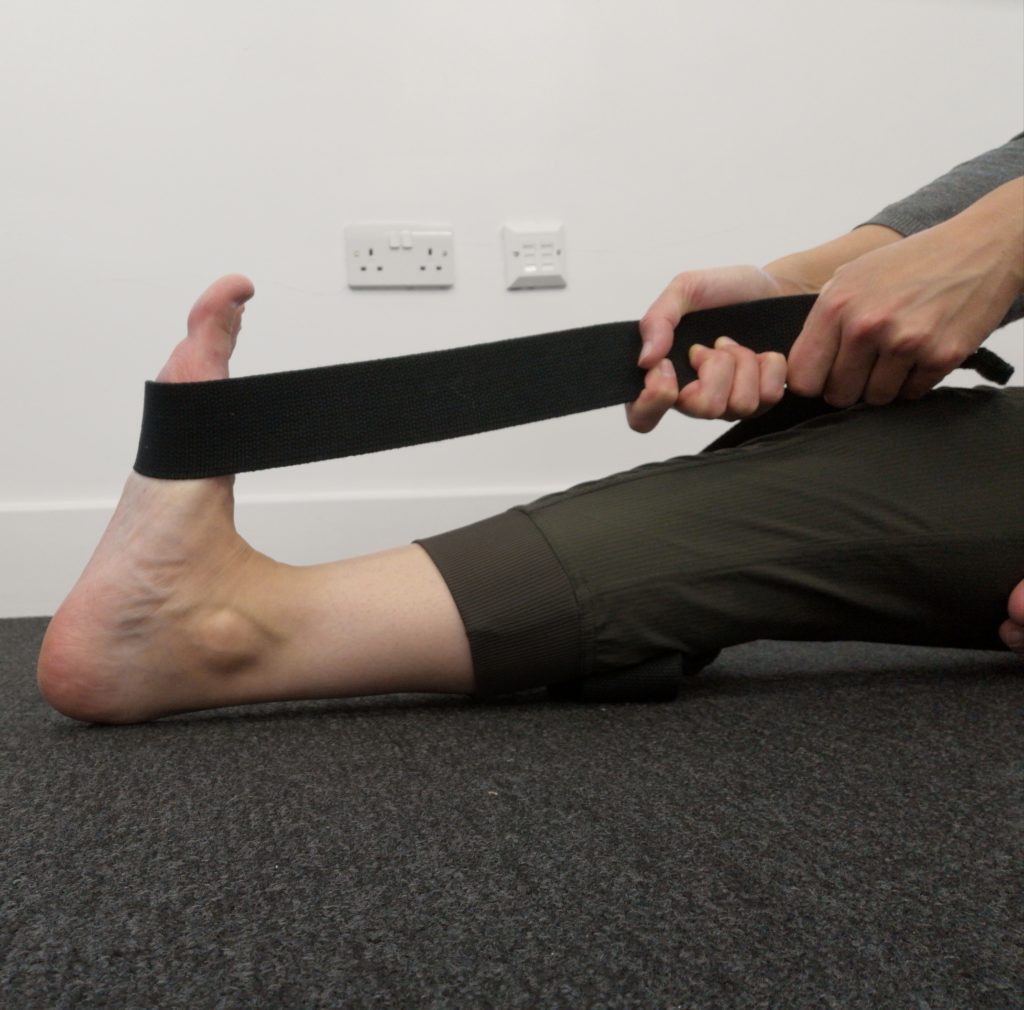
Calf Stretch This does not only stretch your calf muscles, which can feel very satisfying, it stretches the fascia in your foot also and helps your ankle joint to maintain its range of movement. This is vital for good walking quality. You can use a belt or towel to stretch your calf, but you can also do it standing up. Dropping your heel over a step, or stretch your heel back in a lunge.
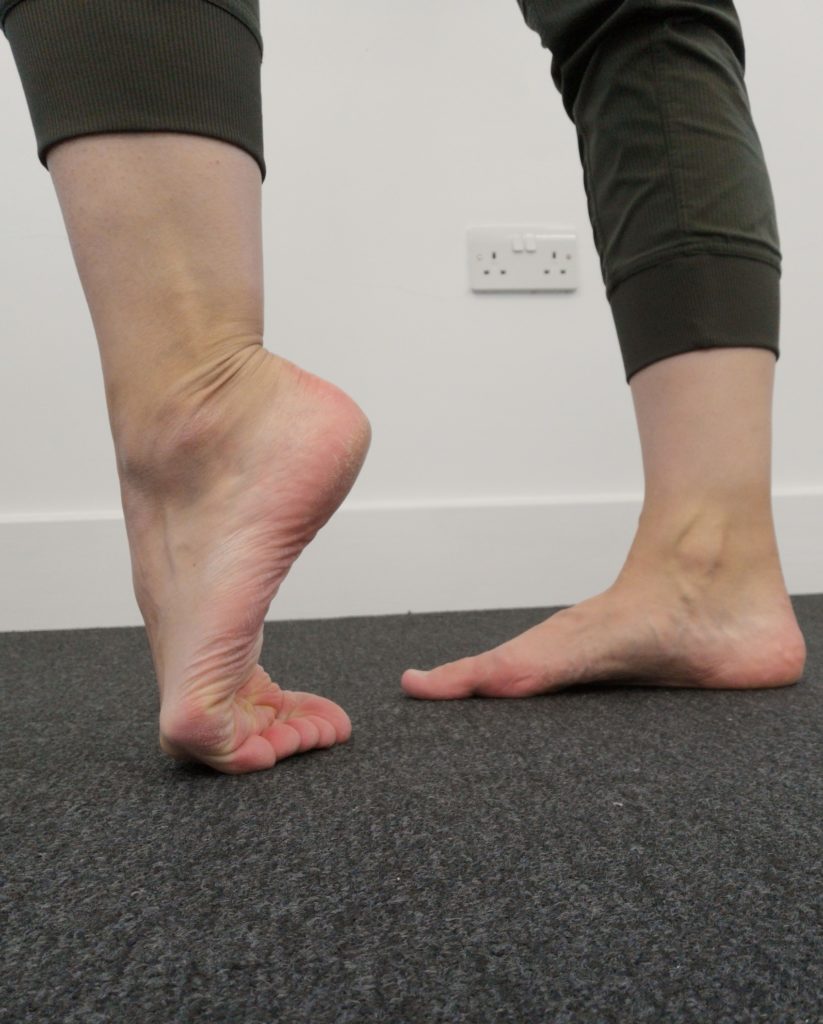
Anterior Tibialis Stretch This stretch is often forgotten about. But it makes sense that if we stretch the back of our ankle we should stretch the front too. And you may find that the anterior tibialis, the muscle running down the outside of your shin bone can be surprisingly tight when you do stretch it like this. Again you also maintain and improve your ankle mobility and your toes also get an important stretch.
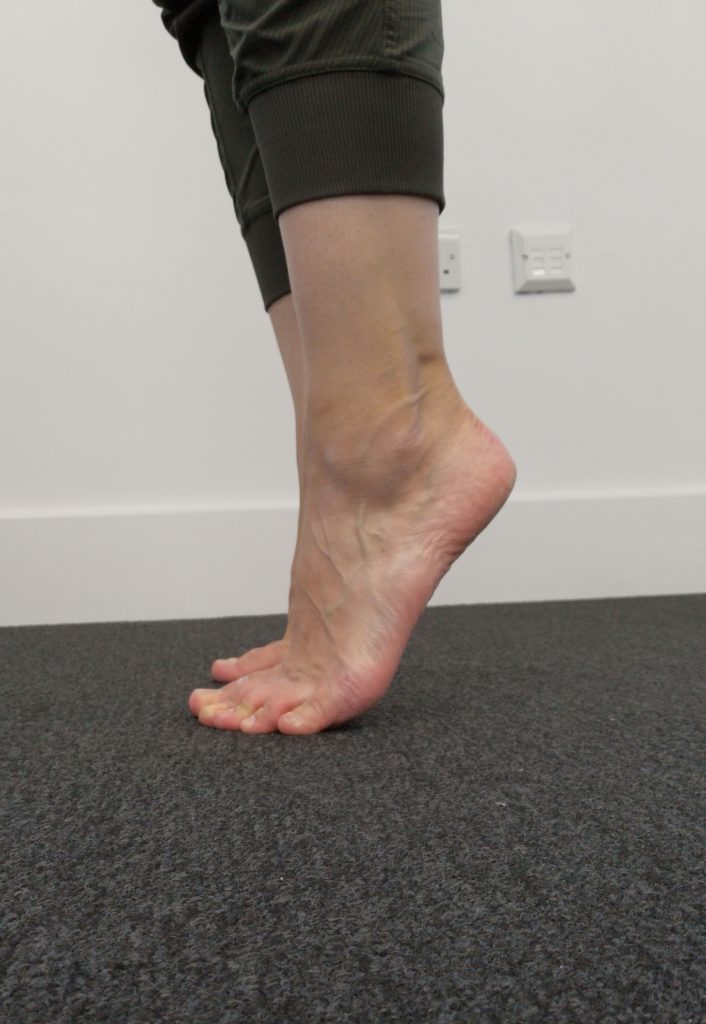
Heel Raise This basic heel raising exercise will help you strengthen your ankles and the arches of your feet. Its easily done when you are standing in the kitchen, stirring the soup or in the bathroom, brushing your teeth. It also will give you a fun balance challenge. One thing to be careful with is ensuring that your feet move through the heel raise without rolling in our out. Try to lift your heels as straightly as you can or even check this in a mirror.
All that is left to do after that is standing on your feet and feel the difference. For fun, go through these 4 exercises on your right foot first and compare how your right foot feels on the ground compared to the left. You will feel a difference that motivates you to do the left side too!
If you would like a little more support with your foot health and functionality to eliminate foot, hip or knee pain or to improve sporting performance feel free to contact Kristin at The Body Matters on 01702 714968.
- The Thing About Mixed Feelings Is… - 4th June 2023
- Overthinkers – Here Is What You Really Need To Know - 28th April 2023
- Why Emotions Can Be Overwhelming - 13th December 2022
